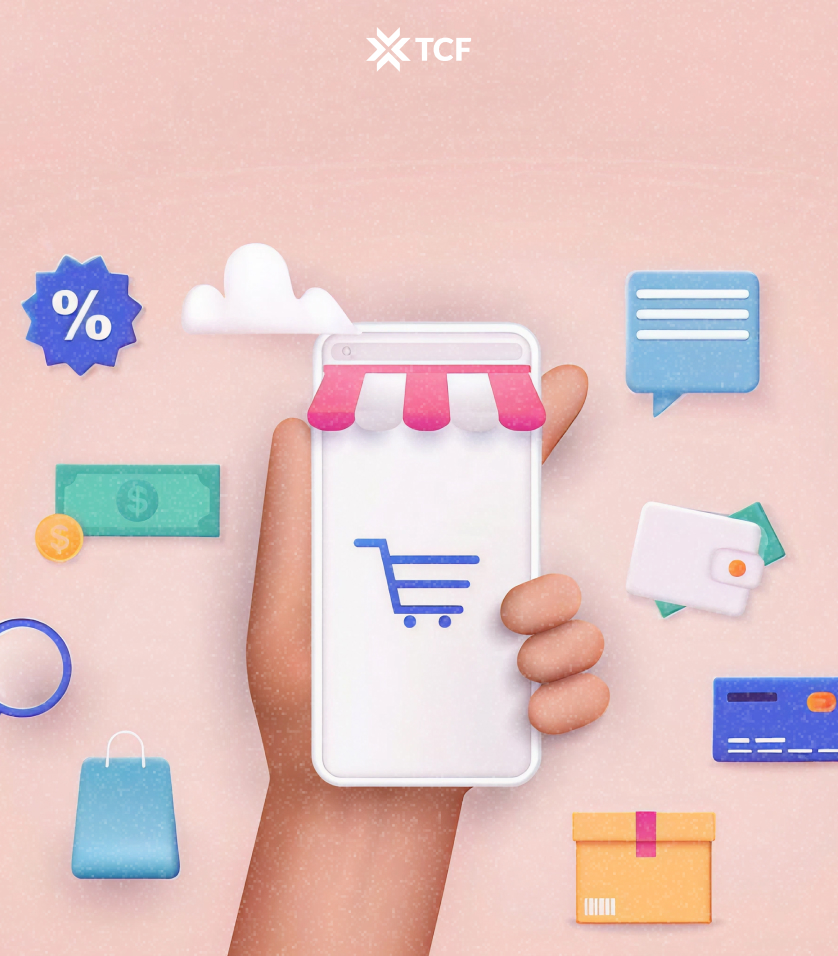When your ecommerce brand starts scaling, channel strategy gets messy fast. Meta looks steady, Google’s acting unpredictable, TikTok’s tempting, and your budget suddenly feels smaller than it used to.
Knowing when to add a new marketing channel or cut an old one can make or break your growth curve. Add too early and you’ll burn money on platforms your team can’t manage. Wait too long and you’ll hit a ceiling while competitors steal your audience.
This guide breaks down exactly how to spot those turning points. You’ll learn which performance signals mean it’s time to expand, when to pull back before a channel drains your profit, and how to keep your marketing mix balanced as your brand scales.
Less theory, more direction. Let’s get into it.
[[cta5]]
Why Ecommerce Marketing Channel Strategy Matters at the Growth Stage
When you’re small, your best-performing marketing channels can carry the whole business. Meta ads alone can drive 80% of your revenue, and that’s fine. Until it’s not. Growth changes the math.
At scale, every channel decision starts affecting everything else. Ad costs rise, audiences overlap, and performance data gets murky. The channel that once printed cash might suddenly drain your marketing budget. That’s why you need a clear, deliberate strategy instead of throwing platforms together and hoping they work.
Two big risks show up as you grow:
1. Over-dependence
Relying on one or two channels makes your brand fragile. Algorithm shifts, platform policy changes, or ad fatigue can wipe out months of growth overnight.
2. Spreading too thin
Adding too many channels too soon splits your focus. You can’t produce enough creatives, track performance accurately, or allocate budget efficiently. The result? Mediocre returns everywhere.
If you want to scale smoothly, treat channel management like a system. Track performance, spot saturation early, and adjust your channel balance before the results tank.
Signals You Should Add a New Ecommerce Marketing Channel
Adding a new channel shouldn’t come from boredom, FOMO, or a competitor’s LinkedIn post about their “crazy TikTok results.” Do it because the data says your current setup is reaching its limit.
Here’s how to spot that moment.
1. Your core channels show diminishing returns.
If your CAC keeps climbing, your ROAS is flattening, or results improve only when you spend more, you’re probably facing saturation. You’ve already captured the easiest audience to convert, and each new customer is getting more expensive to reach.
Before adding another platform, confirm that you’ve optimized what you already have: new creatives, fresh targeting, updated offers. If you’ve tried all that and your numbers still slide, it’s time to explore new audiences elsewhere.
Adding another channel at this stage helps spread acquisition costs, refresh visibility, and prevent total dependency on one source of traffic.
2. You’ve hit product-market fit and have consistent revenue.
Testing new channels makes sense once your product is proven and sales are stable. If your base revenue is steady, customer retention is decent, and repeat purchases are happening naturally, your business can handle the experimentation risk.
Otherwise, you’re scaling noise instead of growth. A new channel amplifies what already exists, so make sure what exists is solid first.
3. Your team and creative capacity can handle the load.
Every platform comes with its own language, visuals, and learning curve. Adding TikTok means short-form video content. Expanding into Pinterest means lifestyle imagery. Trying affiliates or influencers means coordination and contracts.
If your current team is already stretched managing Meta and email, adding another channel can tank quality everywhere. Expansion should feel like a confident next step, not another stress multiplier.
4. You have a clear goal that your current channels can’t meet.
When you’re ready to target a new audience or need to move up the funnel, new channels can help. Maybe you’ve mastered paid ads but need stronger retention, so you build out email and SMS. Or your customer base is aging, and you want to reach younger shoppers on TikTok.
Each new channel should solve a specific limitation. If you can’t tie the “why” to a measurable goal (reach, retention, LTV) it’s not time yet.
Signals You Should Cut or Pause an Ecommerce Marketing Channel
No one likes cutting a marketing channel. It feels like giving up on something you’ve invested in. But the truth is, every channel has a lifespan. Some hit their limit, others stop making sense for your brand. Knowing when to pull back can save your budget and your team’s sanity.
Here’s how to recognize the signs.
1. The ROI is consistently weak.
If a channel costs more than it brings in, you don’t need to “wait and see.” Look at your ROAS, CAC, and contribution to total revenue over the past few months. If performance stays flat after multiple optimization rounds, you’re likely hitting diminishing returns.
Maybe the audience is exhausted, maybe competition drove up costs, or maybe the platform’s algorithm has shifted. Whatever the reason, holding on too long turns a performance dip into a profit drain. Reinvest that money into what’s working.
2. There’s no incremental lift.
Some channels take credit for sales that would’ve happened anyway. For example, branded Google ads often capture people who were already searching for you. If pausing that campaign barely moves your total revenue, it’s probably cannibalizing other efforts instead of adding value.
Run short pauses or A/B tests to check this.
3. It eats too many resources for too little return.
Even a “decent” channel can be wasteful if it drains your team. Think about how much time, content, and budget it needs to maintain momentum. If it takes half your resources to manage but contributes less than 10% of total revenue, it might be time to scale down or automate.
Efficiency is a growth strategy too. Every hour you save can go toward refining higher-performing channels.
4. The audience no longer fits your brand.
Platforms evolve. What once brought in your ideal customers might now attract the wrong crowd or none at all. Maybe your TikTok followers love your memes but never buy, or your Pinterest traffic dropped after a shift in algorithm priorities.
When engagement or conversions slide and the platform’s vibe no longer matches your audience, it’s a signal to re-evaluate.
Cutting doesn’t mean quitting forever. It means pausing, optimizing, or letting the data reset before you reinvest. The goal is to protect profitability, not chase ghosts of past performance.
How to Make the Decision on Adding or Cutting an Ecommerce Marketing Channel: Framework & Metrics
Knowing when to add or cut marketing channels comes down to timing with intention. You can spot the right timing through a set of performance signals, operational readiness, and a few simple guardrails.
Here’s the framework I’d use before touching a single budget line.
Step 1: Check your performance trends
Start with the basics.
Look at the past three to six months of CAC, ROAS, and total sales. If performance is flat or declining despite steady effort, you might be hitting saturation.
If performance is strong and consistent, you have room to experiment.
Metrics worth tracking consistently:
- CAC (Customer Acquisition Cost): rising costs signal saturation or inefficiency.
- ROAS (Return on Ad Spend): if it falls after budget increases, you’ve likely maxed out that audience.
- AOV (Average Order Value): helps gauge if new channels are attracting higher-value buyers or just volume.
- LTV (Lifetime Value): crucial when deciding to cut or keep long-term channels like email or loyalty programs.
Step 2: Run an incremental value test
Ask this: Does this channel actually drive new business or just take credit for what would’ve happened anyway?
You can test it easily: pause the channel for a short period and measure the impact on total sales and traffic. If nothing changes, that’s a clear sign to pause or cut.
If you see a drop, dig deeper, maybe it’s feeding awareness that helps other channels convert. That means it’s worth keeping but possibly re-scoping its budget or purpose.
Step 3: Audit channel overlap
Too many brands measure success in silos. One channel’s “win” might be another’s cannibalized conversion.
Compare audience targeting and campaign data. Are you chasing the same people across Meta, Google, and TikTok with identical creatives? If so, you’re paying for redundancy.
Shift toward complementary roles instead: social for discovery, search for intent, email for retention.
Step 4: Evaluate operational readiness
Data might say “yes,” but your team might scream “please, no.”
A new channel means new content formats, tools, and tracking. Make sure you have:
- Enough creative bandwidth (photos, videos, copy)
- The right tech stack (tracking, reporting, attribution)
- Someone accountable for learning the new platform
If you’re missing any of those, fix that before expanding.
Step 5: Define your decision thresholds
Set objective rules ahead of time to avoid emotional calls. For example:
- Add a new channel when CAC rises 25% over three months and you’ve already optimized your current ones.
- Cut a channel when ROAS stays below 1.5x for two consecutive months after new testing.
- Reallocate when a channel eats 30%+ of your team’s time but underperforms on key metrics.
These thresholds stop you from reacting impulsively and help you defend your choices to whoever holds the budget.
Step 6: Review monthly, decide quarterly
Marketing channels rarely collapse overnight. Reviewing metrics monthly keeps you aware of early changes, while quarterly decisions give you enough time to collect meaningful data.
Avoid switching things up too fast. Consistency reveals the trends.
A good channel strategy assumes spotting the early signals, running small tests, and making budget decisions that protect growth instead of chasing it.
Mistakes to Avoid When Adding or Cutting an Ecommerce Marketing Channel and Overlooked Angles
Every scaling story includes a few wrong turns. These are the ones you can sidestep with a little awareness and a solid process.
- Moving too fast, in either direction.
Adding channels before your current ones are steady or cutting them before they’ve played their full role both waste progress. Every platform needs time, testing, and a clear purpose. Growth decisions work best when they’re paced.
- Measuring short-term only
Focusing on ROAS alone hides the real picture. Some platforms pay off in brand visibility or customer loyalty that doesn’t show up in ads manager. Balance fast metrics with longer-term indicators like LTV and repeat purchase rate.
- Ignoring team limits
A channel might fail not because it’s bad, but because your team is overloaded. Every new platform adds complexity: new creative formats, reporting tasks, and audience targeting. Track performance, but also track energy. Burnout tanks results faster than low CTRs.
- Forgetting to check overlap
Channels often chase the same audience without realizing it. If you’re serving identical ads to the same users on Meta, Google, and TikTok, you’re paying triple for one impression. Audit targeting regularly so your spend works smarter, not louder.
- Skipping post-cut analysis
When you pause or drop a channel, monitor what happens next. Sales might hold steady (great), or another channel might suddenly dip (meaning the cut had side effects). Each change teaches you how your ecosystem actually works. Use that data before making your next move.
- Overlooking creative fatigue
Even the best channel stalls if the content feels stale. Refresh visuals, test new hooks, and rotate offers often. Performance is sometimes a creativity problem.
This is where expert management makes the difference. At TCF, one of the best ecommerce marketing agencies, we help ecommerce brands manage and scale their marketing channels through data-led testing, performance tracking, and strategy adjustments. Some brands come to us overspending on one channel, others spread too thin across five. Our team steps in to optimize spend and expand strategically, making sure every channel earns its place and contributes to real growth.
Conclusion
Scaling a brand means knowing when to move and when to pause. Every channel has its peak, its plateau, and its signal to change. Growth works best when you pay attention to what the data shows and move with purpose.
At TCF, that’s how we run our campaigns. We track performance closely, trim what slows things down, and expand only when the data proves it’s time. The goal is clean growth, steady, efficient, and easy to sustain. Every channel earns its place, every dollar pulls its weight, and the whole system stays built for long-term wins.
[[cta5]]






.png)


.png)


.jpg)

.jpg)